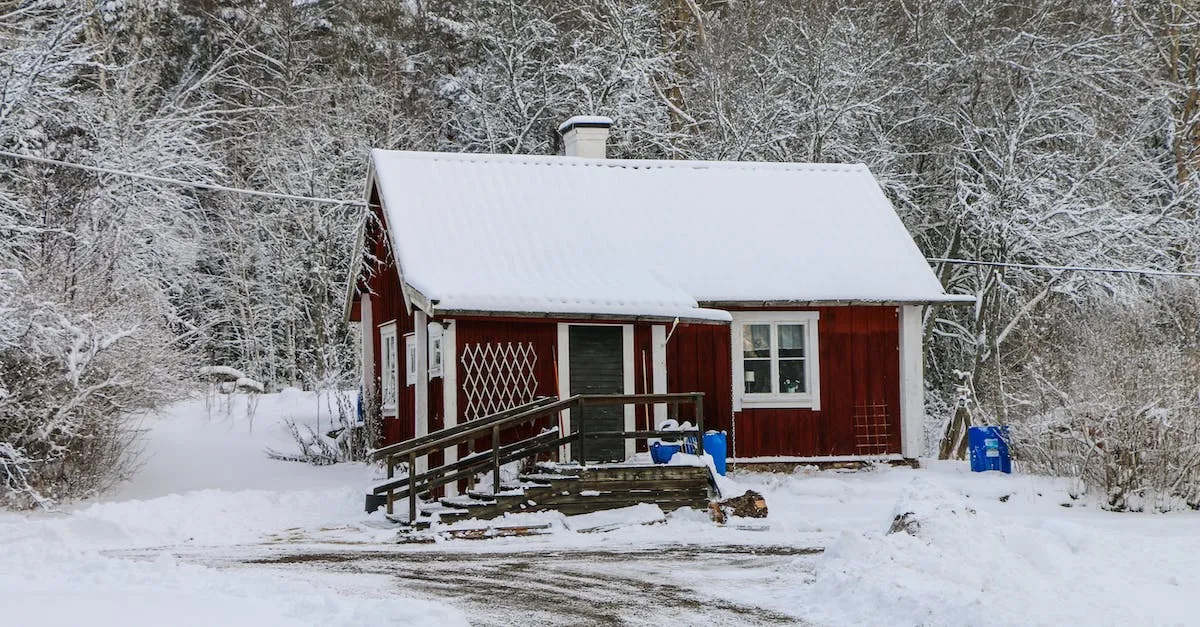Just How Cold Does It Get In Seattle? Examining The City’S Frigid Winter Weather
If you’re wondering how cold it really gets in typically mild Seattle during the winter months, you’re not alone. This Pacific Northwest city is known more for its drizzly gray skies than extreme cold, so just what are normal winter temperatures in Seattle? If you’re short on time, here’s a quick answer to your question: While winter lows average in the upper 30s F, Arctic blasts can occasionally plunge temps into the teens and single digits. However, major sustained cold snaps are rare.
In this comprehensive guide, we’ll take an in-depth look at Seattle’s winter climate patterns, including average low and high temperatures by month. We’ll see how geography and weather systems create cold snaps, examine record lows throughout history, and compare Seattle to other U.S. cities. We’ll also provide tips on handling the cold, from dressing properly to adopting Seattleites’ laidback mindset towards winter. Read on for the full story on just how cold it truly gets in Seattle during the winter.
Overview of Seattle’s Winter Climate
Seattle, known for its mild and temperate climate, experiences a unique winter season compared to other cities in the United States. While it may not have the extreme cold temperatures of the Midwest or the heavy snowfall of the Northeast, the city still sees its fair share of chilly weather and winter precipitation.
Let’s take a closer look at some key aspects of Seattle’s winter climate.
Marine Influence Moderates Temperatures
One of the defining characteristics of Seattle’s winter climate is its proximity to the Pacific Ocean. The marine influence plays a significant role in moderating temperatures throughout the year, including during the winter months.
The ocean acts as a thermal regulator, helping to prevent extreme temperature fluctuations. As a result, Seattle typically experiences milder winter temperatures compared to inland locations at similar latitudes.
The average high temperature in Seattle during the winter months hovers around the mid-40s Fahrenheit (around 7 degrees Celsius), while the average low temperature ranges from the mid-30s to low 40s Fahrenheit (around 1 to 5 degrees Celsius).
However, it’s important to note that these are just averages, and temperatures can vary from year to year.
Brief Arctic Blasts Occur
While Seattle generally enjoys mild winters, brief periods of frigid temperatures are not unheard of. These cold snaps, often referred to as “Arctic blasts,” occur when arctic air masses make their way down from Canada and sweep across the region.
During these episodes, temperatures can plummet below freezing, resulting in icy conditions and frosty mornings.
However, it’s worth noting that these Arctic blasts are relatively short-lived, typically lasting only a few days before the milder marine influence takes over again. So, while Seattle residents may need to bundle up for a few days, they can usually count on a return to more moderate temperatures relatively quickly.
Winter Precipitation Patterns
Winter precipitation in Seattle is primarily in the form of rain, with snowfall being relatively rare. The city receives an average of around 5 inches (12.7 cm) of snow per year, mostly occurring during occasional winter storms.
These snow events are often met with excitement and occasionally lead to temporary disruptions in daily life as the city is not as equipped to handle heavy snowfall as areas with more frequent snowfall.
Seattle’s winter months are also known for their higher levels of rainfall compared to other seasons. On average, the city receives around 5 to 6 inches (12.7 to 15.2 cm) of precipitation during the winter months.
This rainfall can contribute to damp and sometimes gloomy conditions, but it also keeps the city lush and green throughout the year.
Average Winter Temperatures by Month
December
December in Seattle brings cooler temperatures as winter settles in. On average, the temperature ranges from a high of around 45 degrees Fahrenheit (7 degrees Celsius) to a low of 36 degrees Fahrenheit (2 degrees Celsius). It’s important to note that these averages are just that – averages.
There can be significant variations in temperature from day to day, as well as between different neighborhoods in the city.
January
January is typically the coldest month in Seattle, with temperatures dropping even further. The average high temperature hovers around 46 degrees Fahrenheit (8 degrees Celsius), while the average low is around 35 degrees Fahrenheit (2 degrees Celsius).
It’s not uncommon for temperatures to dip below freezing during this time, so residents and visitors alike should bundle up and be prepared for chilly conditions.
February
In February, Seattle starts to see a slight increase in temperatures as winter begins to loosen its grip. The average high temperature reaches around 48 degrees Fahrenheit (9 degrees Celsius), with the average low hovering around 36 degrees Fahrenheit (2 degrees Celsius).
While still cold, the milder temperatures offer a glimmer of hope that spring is on its way.
It’s worth mentioning that these temperature ranges are based on historical data and can vary from year to year. Factors such as El Niño or La Niña patterns can influence weather patterns and result in deviations from the averages.
For the most accurate and up-to-date weather information, it’s always a good idea to check with trusted sources like the Weather Channel or the National Weather Service.
Coldest Temperatures on Record
All-Time Record Low
Seattle, known for its mild and temperate climate, has experienced some chillingly cold temperatures over the years. The all-time record low temperature in the city was recorded on January 31, 1950, when the mercury plummeted to a bone-chilling -2 degrees Fahrenheit (-19 degrees Celsius).
This frigid blast of Arctic air sent shivers down the spines of Seattle residents, who are more accustomed to the city’s moderate winters.
While -2 degrees Fahrenheit may not seem as cold as some other parts of the country, it is important to note that Seattle’s proximity to the Pacific Ocean helps to moderate its winter temperatures. The presence of the warm ocean currents helps to keep the city relatively mild, even during the coldest months of the year.
Coldest Winters in History
Although Seattle is not known for its extreme cold, there have been a few winters in the city’s history that have tested the resilience of its residents. One such winter occurred in 1985, when a cold snap gripped the city for several weeks.
The average temperature for the month of December that year was a bone-numbing 27 degrees Fahrenheit (-2.8 degrees Celsius). This was significantly colder than the average December temperature of 40 degrees Fahrenheit (4.4 degrees Celsius) that the city typically experiences.
Another notable cold winter in Seattle’s history was in 1949, just a year before the all-time record low temperature was set. The city experienced a series of arctic blasts that brought freezing temperatures for an extended period.
The average temperature for the month of January that year was a frosty 27.7 degrees Fahrenheit (-2.4 degrees Celsius). This was well below the average January temperature of 38.3 degrees Fahrenheit (3.5 degrees Celsius) that Seattle usually sees.
It is important to note that these extreme cold events in Seattle are relatively rare and not the norm. The city’s mild and temperate climate is one of the reasons why it is such a popular destination for residents and visitors alike.
For more information on Seattle’s weather patterns and historical data, you can visit the Weather.com website, which provides accurate and up-to-date information on the city’s climate.
How Seattle Compares to Other Northern Cities
When it comes to winter weather, Seattle may not be the first city that comes to mind. However, this vibrant Pacific Northwest city does experience its fair share of cold temperatures and snowy days. Let’s take a closer look at how Seattle compares to other northern cities in the United States.
vs. Minneapolis-St. Paul
Minneapolis-St. Paul, known for its bitterly cold winters, is often used as a benchmark for comparing winter weather in other cities. While Seattle may not reach the same extreme temperatures as the Twin Cities, it still experiences chilly conditions.
In fact, the average low temperature in Seattle during the winter months hovers around the mid-30s to low 40s Fahrenheit (1-5 degrees Celsius). In contrast, Minneapolis-St. Paul sees average low temperatures in the single digits and below zero Fahrenheit (-17°C and below).
Seattle residents might find solace in the fact that they don’t have to endure the same bone-chilling cold as their Midwestern counterparts. However, it’s important to note that Seattle’s milder winter weather doesn’t mean it’s immune to snowfall.
The city does receive occasional snowstorms, although they are usually less intense and shorter-lived than those in Minneapolis-St. Paul.
vs. Chicago
Chicago, also known as the “Windy City”, experiences some of the harshest winter weather in the United States. The average low temperature in Chicago during the winter months is typically around the mid-20s to low 30s Fahrenheit (-4 to -1 degrees Celsius).
Comparatively, Seattle’s average low temperatures are considerably milder.
While Seattle may experience some chilly days and occasional snowfall, it doesn’t quite reach the same level of frigidity as Chicago. Seattleites can count themselves lucky to have a relatively more moderate winter climate compared to their counterparts in the Midwest.
vs. Boston
Boston, the capital of Massachusetts, is no stranger to cold and snowy winters. The average low temperature in Boston during the winter months falls in the mid-20s to low 30s Fahrenheit (-4 to -1 degrees Celsius), similar to that of Chicago.
Seattle, on the other hand, experiences milder average low temperatures.
While Seattle may not be as cold as Boston, it’s important to note that each city experiences its own unique winter weather patterns. Boston, being located on the northeastern coast, is more prone to nor’easters and heavy snowstorms.
Seattle, with its proximity to the Pacific Ocean, experiences a more maritime-influenced climate, which can result in milder winters overall.
Comparing Seattle’s winter weather to other northern cities can give us a better understanding of the climate variations across the United States. While Seattle may not be the coldest city in the country, it still experiences its fair share of cold temperatures and occasional snowfall.
So, if you’re planning a trip to Seattle during the winter months, make sure to pack some warm layers and be prepared for a mix of weather conditions!
Tips for Coping with Seattle’s Cold Snaps
Seattle may be known for its mild climate, but when winter arrives, the city can experience some surprisingly cold snaps. While it’s not quite as frigid as some other parts of the country, the chilly temperatures can still catch residents off guard.
Here are some tips to help you cope with Seattle’s cold snaps:
Dress in Layers
When the temperature drops, it’s important to dress appropriately. Layering your clothing is key to staying warm. Start with a base layer made of moisture-wicking material, add a insulating mid-layer, and top it off with a waterproof and windproof outer layer.
Don’t forget to wear a hat, gloves, and warm socks to keep your extremities cozy. Remember, it’s easier to remove layers if you get too warm than to add them if you’re feeling cold.
Stay Active
One way to combat the cold is to keep moving. Engaging in physical activity generates body heat and helps to keep you warm. Consider going for a brisk walk or jog, or try out an indoor exercise class. Not only will you stay warm, but you’ll also reap the benefits of staying active, such as improved mood and increased energy levels.
Enjoy Indoor Activities
When the temperature outside is less than inviting, take advantage of the many indoor activities Seattle has to offer. Visit museums, art galleries, or catch a movie at a local cinema. You could also spend time at a cozy café, sipping on a warm beverage and enjoying a good book.
By embracing indoor activities, you can still have a great time while staying warm and cozy.
Accept the Cold Snap Will Pass
Lastly, it’s important to remember that cold snaps in Seattle are usually temporary. While it may feel like winter will never end, rest assured that warmer days will return. In the meantime, try to embrace the cold and find joy in the unique experiences it brings.
Build a snowman, have a snowball fight, or simply appreciate the beauty of the winter landscape. Before you know it, the cold snap will be a distant memory.
Remember, staying prepared and taking care of yourself during Seattle’s cold snaps is key to making the most of the winter season. So, layer up, stay active, enjoy indoor activities, and embrace the temporary chill. Before you know it, spring will be just around the corner!
Conclusion
While Seattle is far from the coldest major city in the United States, it still sees its share of frigid temperatures during the winter months. While average lows in the 30s are the norm, Arctic fronts can occasionally plunge temps into the teens for brief periods. However, protective geography and the marine influence typically prevent extreme cold from persisting for very long. By dressing in layers, enjoying indoor activities, and adopting Seattleites’ philosophical attitude towards winter, you can make the most of the city during its coldest but coziest season.








